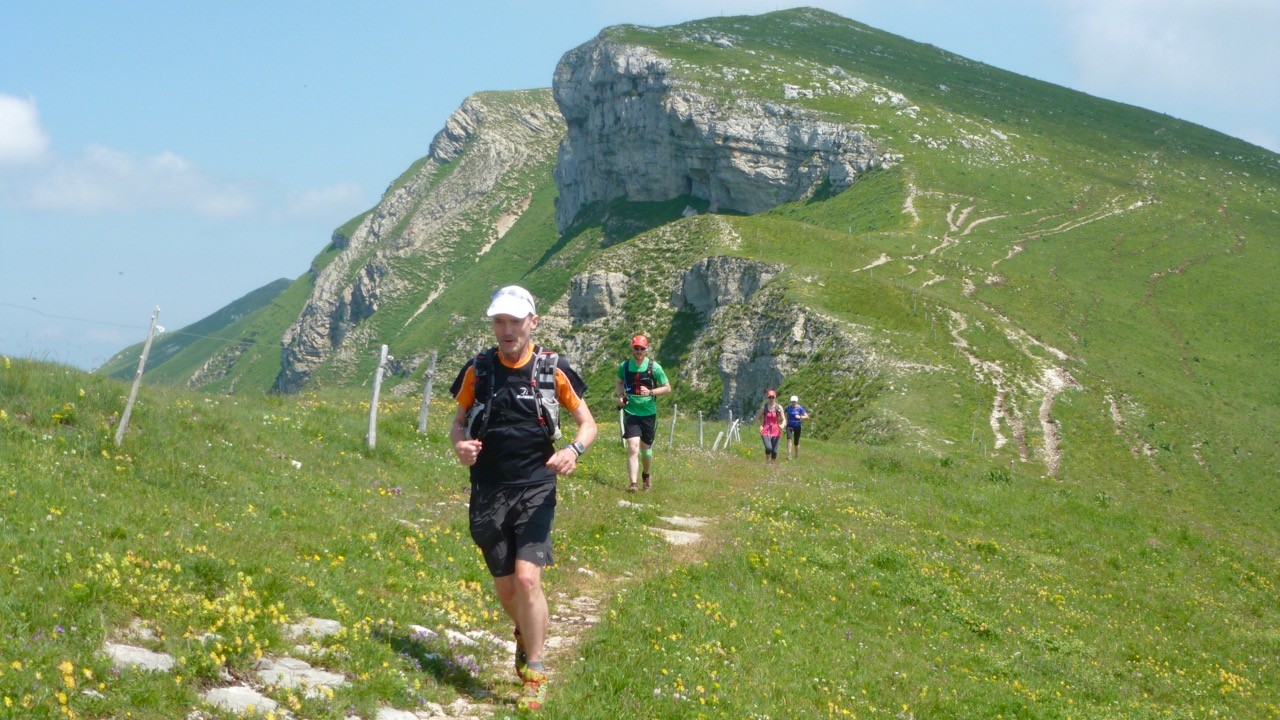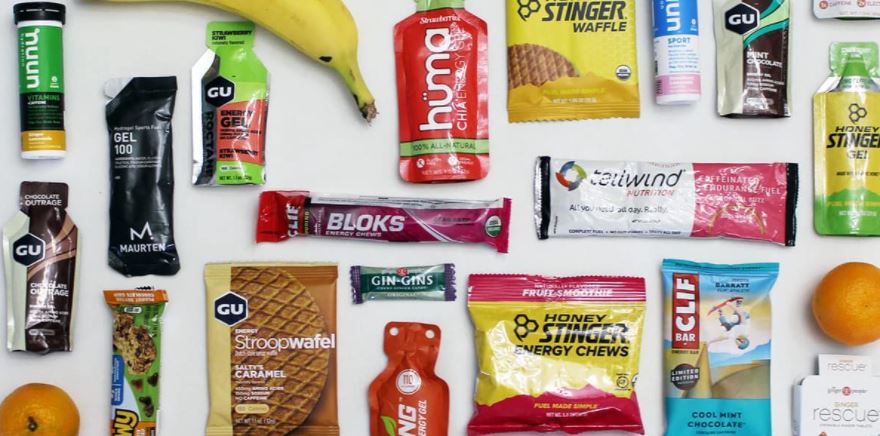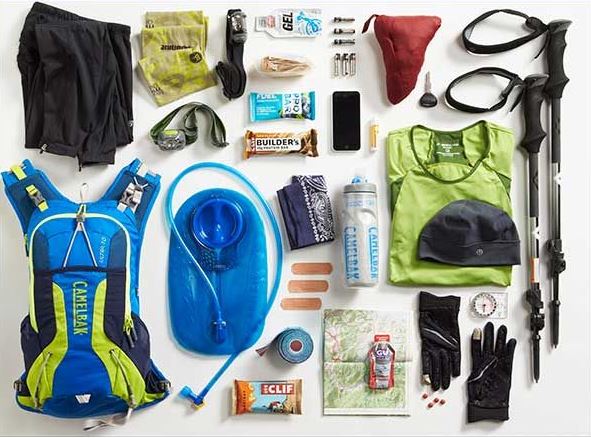
According to Wikipedia, 'Trail Running' is a sport-activity which combines running, and, where there are steep gradients, hiking, that is run "on any unpaved surface". Anyone can trail run, whether this be competitively or just getting out and enjoying the nature. Here we highlight the key kit you need to get started.
Trail running is great because you don’t need very much to start, a lot of us think we need more than we do. The key is to make sure your gear is safe, useful and light weight.
Ideally you want the minimum gear to travel quickly and as comfortably as possible. But things can change quickly on the trail, such as weather and injury, so you might find yourself taking more than you use. If you’re unsure, try checking local races for mandatory kit checklists and you can often base what you pack accordingly.
Continue reading to make sure you haven’t forgotten anything for your next run.
You’re going to need something to put all your kit in; a trail pack should be big enough to hold all the necessary equipment and shouldn’t restrict movement. Coming in a range of sizes from small 1Litre running belts up to 15Litre packs for long distance Ultras. You’ll need to select the volume to suit both your distance and the amount of equipment you’re going to be bringing.
The best way to pick the most suitable trail backpack for you is to try them on. Some people find them uncomfortable, if this is the case, they’ve often been using the wrong one. Select a pack with lots of pockets to access equipment without stopping, keeping in the rhythm of running.
Alongside the pack you pick, you’ll need to think about how you’re going to store water, some bags have bladders, while others use soft flasks. Find what works for you and find a bag that matches this.
Solomon have created this helpful video to help you choose which kind of pack is right for you:
Once you’ve found the perfect bag, here’s what to put in it.
No matter what the temperature is or how long you’re going for, it’s generally a good idea to carry some water during a trail run, in case you get lost or injured and duration on the trail increases. However, there’s little point in carrying far more than you’ll need as the key is being light.
Depending on where you are and what the temperature is decides how much you’re going to need, remember the temperature may go up during your run so that’s something you’ll need to factor in. If you’re just starting off trail running, practice taking a bit more than you’ll need and then whittling it down to the perfect amount, it will take a few runs to get used to how much you’re drinking.
Use soft flasks or a bladder to store the water, that way you can continue running while drinking and there’s no need to take them out to drink from or to remove the pack when refuelling. If it’s going to be really hot or a lot of elevation is involved, it might be a good idea to use hydration salts or bringing an isotonic energy drink.
If you’re running near clean streams try bringing a foldable cup and water purification liquid which can be used to fill up as you go, saving the weight of additional kilos of water on your back. Figure out your hydration strategy during training and then stick to this when running races.

If you’re running for longer than an hour it would be a good idea to eat some kind of food, like the water, it will take time to gauge how much you’re going to need for different length runs.
Some runners like bars and gels containing compact energy while others prefer more comfort foods that you might find in the fridge – such as a peanut butter sandwich. Foods like bananas might seem good at first but after a couple of hours of running, they can go mushy in your pack.
Ensure you can properly digest the foods you choose before relying solely on them during a run. Eating a range of foods is also important when running to reduce boredom and keep your taste buds entertained. It might take some practice to get used to eating when you are running rather than when stopped but if you can master this you save lots of time.
Some races require emergency rations of minimum calories so be sure to check this before racing and go with similar foods to those you normally run with – but make sure they won’t go off if they’re sitting in the bottom of your pack for a while.
Apart from really hot days, some kind of jacket is good to provide an outer shell of protection. Choose a jacket suitable for the weather you’ll be running in, whether that be a layer to protect from the cold, a windproof or waterproof jacket or a jacket for all occasions.
Generally, a jacket and shoes are the two items which are worth spending more money on – you can get away with saving money on some of the other items, but a jacket is something that ensures your safety, and you’ll use it frequently. Putting your jacket on over your running pack will help keep everything else inside dry.
Having an extra layer in the bag will also really help if you have to walk due to injury and are losing body heat more than expected.

Bring your phone in case of emergency or if you need to call a taxi for whatever reason, bring a plastic bag if it’s not waterproof. Take photos on your phone of the landscape during your run to help keep the memories of a good run fresh! Taking a bit of money is also a good idea in case you need an unexpected halfway café stop!
In case of injury bring a small first aid kit, as a minimum bring blister plasters and a small bandage, zinc oxide tape is useful as can be used for so much – from taping up an ankle to fixing broken shoe. Depending on the weather don’t forget sunscreen, a hat, or a buff. For certain races and on longer training runs you’ll require a safety blanket to protect you from the cold if you have to stop.
Depending on the length of your run and the time you’re setting off take a head torch, most modern ones are light weight and small so there isn’t a reason not to take one. Remember spare batteries or a portable charger if you’re out for a while.
Even if they are called “cheat sticks” in the lake district, running poles can significantly help on big climbs and when you’re tired. They’ll help create an upright posture to maximise oxygen uptake into the lungs and take some pressure off your legs on the uphill and downhill sections.
Not only useful for an emergency but also a good moral booster to track your movement, a map and compass can be a great help on the trail. So long as you know how to properly use them before setting out, you’ll be able to spot distant peaks to aim for and give you exit points off the trail in case of emergency.
Last but not least bring a friend and to have fun on the trail together – with any luck you can even share some kit carrying!
Et voila here is a little visual to help you pack and get you in the mood for your next trail adventure - enjoy packing!
Tracks and Trails offer a range of trail running courses from Introductory / Improver camps to multi - day tours, which can be found here. Alternatively, if you wish to speak to one of our expert team for further information, call us on +44 (0)20 8144 6442 or email This email address is being protected from spambots. You need JavaScript enabled to view it.
